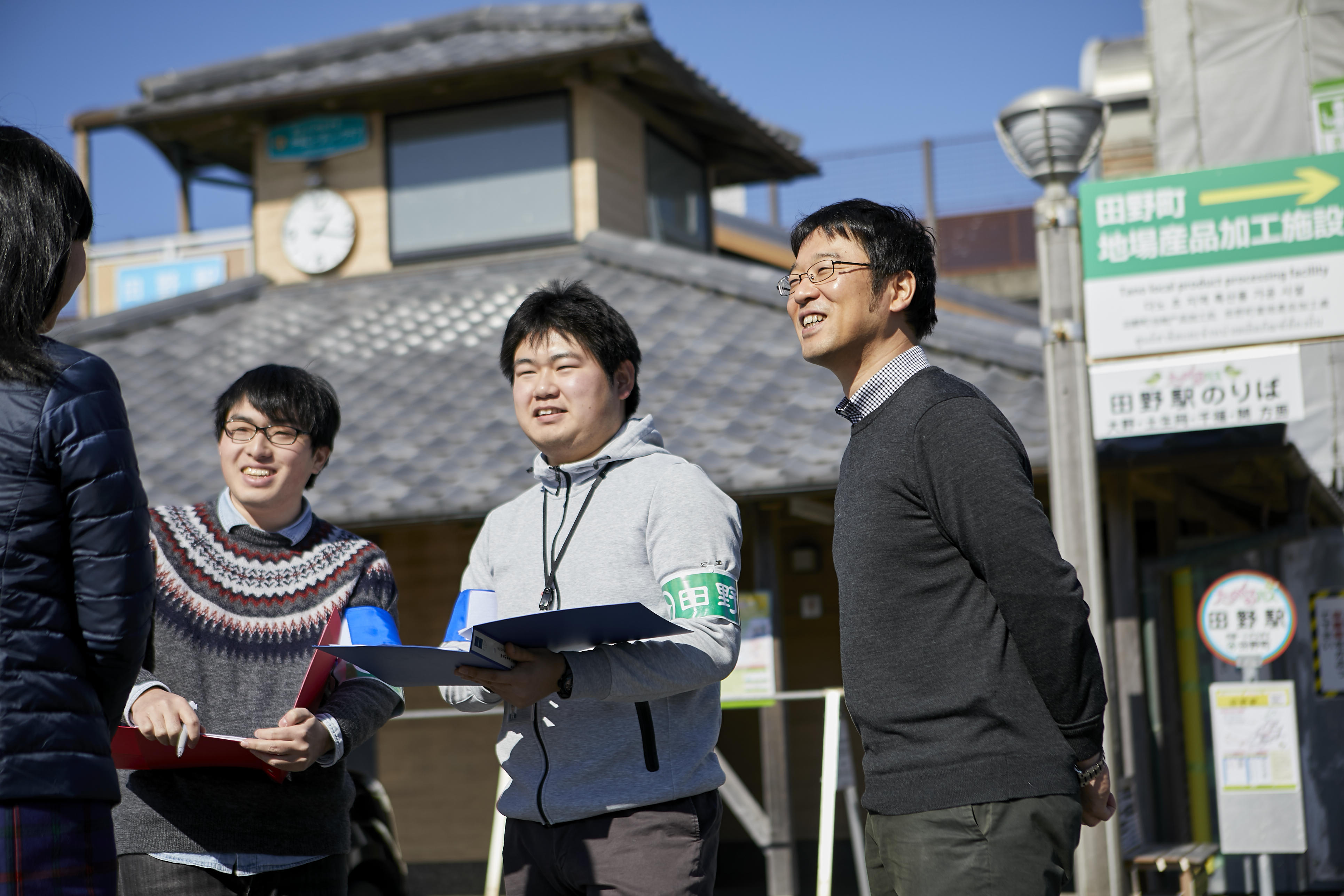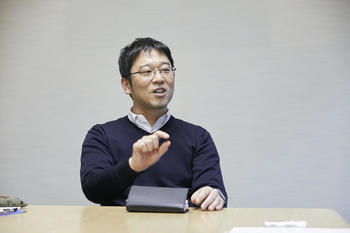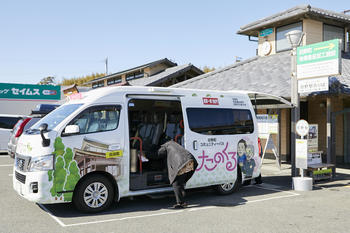- TOP
- Cutting-edge Research and Social Contribution
- Cutting-edge Research
- Using residents' views to realize ideal regional public transport

Using residents' views to realize ideal regional public transport

NISHIUCHI Hiroaki
- Specialized field
Infrastructure planning and management traffic engineering
Securing transportation for the elderly in areas with no public transport
In mountainous areas where the birthrate is declining rapidly and population aging is progressing, bus services are being steadily reduced and eliminated due to the decrease in the number of public transport users. It is now an urgent issue to secure transportation for those who cannot drive, including the elderly. Although more and more local governments are introducing local public transport such as community buses, in many cases the number of users of such transport is lower than expected due to inadequate prediction of changes in resident lifestyle and to difficulty in securing drivers and vehicles.
In response to this situation, Assistant Professor Nishiuchi, a specialist in traffic engineering, is tackling the challenge of securing transportation in mountainous areas. Since 2016 he has participated in transportation planning for mountainous areas for several local governments of Kochi Prefecture, conducting surveys and analysis of the actual situation of local residents and their degree of satisfaction with existing transportation. Dr. Nishiuchi got a deep understanding of the actual condition of the mountainous areas--which prompted him to begin his research.
Dr. Nishiuchi says, "I felt anxious when I thought about the situation in such mountainous areas 30 years from now, when I will be one of the elderly. I thought we should come up with measures for 30 years in the future, and secure a transportation system that can be used easily by anyone who needs it."
As a first step, Dr. Nishiuchi carried out a questionnaire survey in Tosashimizu City, Kochi Prefecture for residents who use public transportation, with the aim of creating attractive public transportation with high user satisfaction. He identified the factors that affect degree of satisfaction with the Odekake-go on-demand bus service operated by the city and with private bus services.
It became clear that people who use public transportation desire effective travel and services, and also access to local information and pleasant interaction with other passengers.
Dr. Nishiuchi explains, "The results of the surveys showed that it is important to eliminate the sense of alienation from the community, and that it is necessary to devise ways of providing local information in regional public transport. To achieve that, devices such as smartphones and tablets are indispensable. I think it is important for the elderly who do not have their own transportation to be able to use latest devices; that is the key to increasing user satisfaction. Local public transport should move away from low-tech and become thoroughly high-tech. By creating such a flow now, we want to prevent a gap between us and the younger generation in the era when we become seniors. We don't want the young to be thinking, 'High-tech is impossible for you because you're old."
Responding to public views: creating local public transport that meets residents' expectations
While conducting his research and analysis, Dr. Nishiuchi began to question the method of grasping the residents' perceptions. For example, questionnaire surveys by mail and workshop style interview surveys, which are now mainstream methods, might only collect principles rather than real desires. Also, it's possible that only residents with high awareness of transport would answer the questions. He thought such methods tend to be distanced from the real general desire of the people, so he decided to actually visit the area and ask the residents directly about their wishes.
"I thought that arriving unexpectedly in the area and hearing each resident's opinions and wishes would be more effective than using questions with a preestablished answers. It could be a shortcut path for the work towards a desirable form of local public transport."
Therefore, in order to solicit residents' genuine wishes and to clarify the actual status of local public transport usage, he conducted an interview survey involving one-on-one dialogues with the residents. Dr. Nishiuchi and his students stayed in Tosashimizu City, Tano Town and Yasuda Town in Kochi Prefecture, one week at each location. The students walked through villages and talked at random with residents.
In the course of these interviews, they also asked about the residents' awareness of information and communication technology (ICT) as it relates to transportation services using smartphones--since even mountainous areas are expected to have public transportation featuring automated driving and ICT-based sharing in the near future.
Furthermore, in order to get a deeper understanding of the respondents' perception of local public transport, the local government and their own life, they classified the residents' voiced responses into three types, "Positive towards transportation"; "Have awareness of issues"; and "Appear to be having difficulties."
They found clear differences in perception among the three local governments surveyed: "There is no problem so it is good to keep the present condition"; "About half of the people are having difficulties, but their positive awareness of the need for improvement tends to be low"; and "People are not having much difficulty, but they are aware that to improve the situation, something has to change."
"Even regarding attitude towards using ICT, we found that the people in one municipality are positive about ICT, while the people in another local municipality are negative. Despite such differences, all local governments voiced similar positions in their Regional Public Transport Network Planning Plan, such as "Let's get rid of inconvenience" and "Let's get on the community bus and go to the city." However, in a region where the residents are positive about the use of CT, for example, if reserving on-demand transportation (which is currently done by telephone) could done with a smartphone application, it would meet the residents' wishes and at the same time reduce costs. Based on the above, it is suggested the method of interview is better than uniform questionnaires to find their desired transportation."
Also, when the quantitative data from the "Yes or No" responses were compared with the qualitative data from the interview survey, the results were varied. It became clear that there could be differences between the conventional questionnaire survey results and real perceptions of the residents--and thus a danger that the services that people desired might not be provided.
Dr. Nishiuchi continued, "We found that the elderly do not always resist the use of ICT, so we are thinking of installing a tablet in the community bus to make it possible for the passengers to view the latest local information. If we provide up to date information about the area, people might get on the community bus to access the information and they would have more opportunities to chat with others. I think that people would enjoy the local public transport more. If elderly people actually used the tablets, they would get familiar with ICT equipment too: we could kill two birds with one stone."
Cutting edge community buses creating human exchanges via ICT
After examining the results of the interview surveys, in 2018 the students of Nishiuchi laboratory stayed in Tano Town for one week each season, and conducted more detailed surveys of the use of local public transportation in the main areas of the town such as supermarkets, hospitals, drug stores, and hot spring facilities. Specifically, they asked residents not only about the current usage of the community bus operated by the town and the residents' intention to use it, but also about aspects of their living sphere (e.g. when and from where do people come to the town, by what means of transportation), to determine whether supply and demand match.
Dr. Nishiuchi thinks that regional public transport can be made more realistic for the lives of users by hearing their voices with this kind of survey.
Dr. Nishiuchi adds, "For example, there are many people coming from neighboring Nahari Town, Yasuda Town and Muroto City (which is a little further away) to use facilities in Tano Town. However, the local public transport established by the town was designed on the assumption that only people from Tano Town would use it. So people of Yasuda Town which borders on Tano Town, cannot use the Tano Town Community Bus even if they want to. As long as the living sphere and the transportation system do not match, the system may not be very useful, even though nice buses are provided. In order to gain such basic insights about the area, we conducted surveys centered in Tano Town in fiscal 2018. I expect the results will reveal the real living sphere if we observe not only the people who are interested in local public transport, but also the people who do not use it."
After determining how many people come from out of town to use the town's facilities, Dr. Nishiuchi intends to propose to various municipalities that they should also work to meet out-of-town demand, rather than operating their community buses only within each town.
In the future, Dr. Nishiuchi aims at provision of fully ICT equipped state-of-the-art community buses, which would allow the elderly to enjoy traveling.
"We hope to create a bus system that people will use not just for shopping and going to the hospital, but also for the fun of getting on the bus. Ideally, local public transportation should provide opportunities for social exchange."
Working towards a transportation system that can be used spontaneously when it's needed, Dr. Nishiuchi will continue his research, overturning preconceived notions about community buses.

